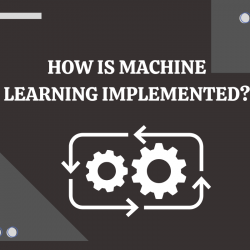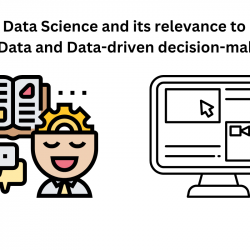What should I learn: Machine Learning or Data Science?

Introduction
Are you wondering what would be the best choice for you to learn: Machine Learning or Data Science? Both of these fields have a lot of potential and can open up many interesting career opportunities. But which should you learn first?
In order to understand the differences between the two fields, we must first understand the knowledge overlap between them. In essence, Machine Learning is a subset of Data Science. It is an application of artificial intelligence that uses algorithms to make decisions and predictions based on data. On the other hand, Data Science focuses on drawing insights from large datasets and consists of many aspects like data engineering, mathematics, machine learning, analytics, visualization of data, etc. Thus, while both require knowledge in mathematics and statistics, Machine Learning requires an additional understanding of algorithms as well as experience in programming languages like Python or R.
Now that we’ve discussed the knowledge overlap between these two fields let’s talk about their roles and applications. Generally speaking, Machine Learning is used for prediction focused tasks such as personalization systems or spam filtering whereas Data Science involves extracting insights from large datasets using various methods like visualizations or statistical tests that are used to drive business decisions.
As with any technical skill set there are pros and cons to both Machine Learning and Data Science depending on your specific goals and needs. With Machine Learning you can easily create automated systems that are able to analyze large amounts of data quite quickly but often require a significant amount of time upfront to build and optimize such models. On the other hand with Data Science you get great flexibility when it comes to exploring different types of datasets however it also takes time to interpret results correctly so that it drives decision making in the right direction.
Overview of Machine Learning
If you’re trying to decide what to learn, it can be difficult to choose between Machine Learning (ML) and Data Science (DS). To help inform your decision, it’s important to understand the differences between them.
Firstly, ML is a subset of DS. It focuses on using algorithms and techniques to build computer models that can learn from data in order to make predictions or decisions without being explicitly programmed. On the other hand, DS is a broader term that encompasses data analysis, visualization, and modeling with the end goal of uncovering patterns and insights from data.
The core difference between ML and DS lies in their focus. While DS concentrates on leveraging data to develop meaningful answers for a given problem, ML concentrates more on developing models that can be trained automatically as new data comes in. In other words, DS is focused on explaining while ML focuses on predicting or classifying.
When it comes to learning ML algorithms & techniques, supervised learning and unsupervised learning are two common types of machine learning approaches used for different kinds of tasks. Supervised learning models are trained on labeled datasets which means they receive guidance from a ‘teacher’ or label about what the correct output should be for a given input. Unsupervised learning models do not have labels; instead they must learn how to group data points which have similarities as well as identify outliers or anomalies in the dataset.
The final step in an ML process is training the model with labeled datasets through various iterations until the model is able to generalize its knowledge about the data accurately enough for prediction tasks. This involves tuning parameters, such as weights assigned by neurons in an artificial neural network (ANN),
Overview of Data Science
Are you trying to decide if you should learn Data Science or Machine Learning? Before making your decision, it’s important to understand what these fields encompass and how they differ.
Data Science is a rapidly growing field that bridges the world of computer science and business analytics. It involves the full scope of collecting, cleaning, processing, analyzing, and interpreting data. Those who specialize in Data Science use their knowledge of tools & techniques as well as programming languages like Python, R, SQL, etc., to synthesize large amounts of data through both quantitative and qualitative methods. Data cleaning and physics processing are also skills mastered by a Data Scientist in order to make accurate conclusions from big data. They also build models based on insights gained from analysis and create visualizations or reports for stakeholders.
Machine Learning is a subset of Data Science which focuses on developing algorithms that can automatically learn and improve from information without being explicitly programmed. This type of technology allows computers to identify patterns in data sets through predictive models, as well as uncover hidden insights by recognizing similarities among different pieces of information. When combined with production level datasets, this technology has the ability to drive an organization’s decisions with accurate predictions about customer behaviors or demand forecasts.
So which one should you choose—Data Science or Machine Learning? It really depends on where your interests lie and what career path you’d like to pursue. If your primary goal is to gain expertise in interpreting business analytics or working with large datasets for research purposes, then pursuing a degree in Data Science would be ideal for you. On the other hand, if your ambition is to develop algorithms that can make decisions based on predictive models derived from data rather than instructed programming codes; then Machine Learning could
Identifying Your Goals & Interests
When deciding what to learn Machine Learning (ML) or Data Science (DS) it’s important to first identify your goals and interests. Do you want to develop advanced predictive models from data? Or are you more interested in extracting insight from existing data sets? Both ML and DS require different skill sets and levels of subject knowledge, so knowing what you want to achieve in each field will help you determine which path best suits your needs.
ML focuses on developing algorithms and techniques that learn from data without being explicitly programmed. This requires a strong technical background as well as an understanding of the underlying principles of statistical modeling and machine learning. By mastering ML, you’ll be equipped with the skills to build cutting edge predictive models.
DS involves building systems that can identify patterns within large quantities of data. To succeed in this field, you’ll need an understanding of fundamental concepts like probability, statistics, computer science and mathematics. With this knowledge, you can create systems that can better understand complex relationships within datasets and draw meaningful conclusions.
The career opportunities for those trained in ML or DS are vast – from engineering roles to applied research positions. Depending on which option you choose, the job opportunities available will vary greatly. For instance, if you decide to pursue a career in ML then web development, software engineering or machine learning engineering may be paths for consideration. Alternatively, someone interested in becoming a Data Scientist could think about transitioning into roles such as research or analytics specialist or even project manager/leader.
At the end of the day both DS and ML offer plenty of exciting job prospects whatever direction you take; however knowing your goals and interests is the key step when making this decision.
Best Data Science Courses In India
Deciding What to Learn
Deciding What to Learn: Machine Learning or Data Science?
Are you considering getting into the field of data science or machine learning? With two rapidly growing and profitable career paths, it can be daunting when deciding what to learn. But don’t worry! In this article, we’ll look at the skills required for each field, the knowledge you could gain, the technology used, job prospects, the cost of learning and time commitment.
Machine Learning is a type of artificial intelligence (AI) that focuses on building systems that can be taught specific tasks without explicit instructions or programming. It has become an increasingly popular field as companies are looking to automate their processes and become more efficient with storage. This requires a deep understanding of algorithms and data structures in order to create models that best predict outcomes from given inputs. Typical skill sets include Python, TensorFlow/Keras, R and MATLAB/Octave. The knowledge gained will give you an understanding of how AI models are designed and implemented such as linear regression techniques, backpropagation algorithms and neural networks.
Data Science is a broad area of expertise which involves using various techniques such as cleaning, wrangling and analyzing data in order to draw insights from it. This could be anything from creating visualizations for better decision making or predicting customer behavior in an online store. Key skills required include statistics, data mining & warehousing technologies such as SQL & Excel together with programming languages like R & Python. With this comes extensive knowledge about different data analysis methods like supervised & unsupervised learning methods, cluster analysis & text mining techniques.
Pros and Cons of ML and DS
Are you trying to decide between learning Machine Learning (ML) or Data Science (DS)? Both are powerful tools within data analysis, but they have different goals and require different skill sets. Here we’ll discuss the pros and cons of both ML and DS, as well as explain what tasks each best accomplishes.
ML vs DS
Before diving into the specifics of ML and DS, it’s important to clarify the main differences between the two. Data Science is a broader concept in which machine learning is only one approach. While ML relies on algorithms to learn from data, data science is more focused on extracting insights from data through statistical techniques and exploratory analysis. Whereas ML is mainly concerned with predicting outcomes based on existing models, DS looks at large datasets to help identify trends or patterns which can be used for a variety of applications.
ML Tasks
Machine Learning automates the process of extracting useful information from data through iterative learning cycles. A number of tasks are associated with ML such as supervised learning, unsupervised learning, pattern recognition, anomaly detection, clustering, predictive analytics, etc. In supervised learning tasks like classification or regression problems where labeled training datasets are used to train models; an algorithm uses the input variables to generate labels or predicted values for new unseen data points. Unsupervised learning attempts to identify patterns or hidden structures in raw datasets without requiring explicit labels or supervision by a human expert; common examples include clustering algorithms that group similar objects together based on their features while anomaly detection can be used to detect outliers in a dataset that do not conform with other values which may indicate fraud or other unconsidered behaviors.
Resources to Get Started With ML and DS
If you are considering getting started with Machine Learning (ML) and Data Science, you must first understand the basics of computer science. Computing is at the foundation of ML and DS, so brushing up on key concepts like algorithms, data structures, architecture, and programming will help you better understand these complex fields.
It can be overwhelming to determine where to start when learning both ML and DS. When deciding which of the two to focus your efforts on it is important to understand that each field serves a specific purpose. Machine Learning focuses primarily on developing models for predictive analytics and AIbased projects. Data Science is focused on collecting, organizing, analyzing data from various sources to draw insights and inform business decisions or discover new trends or features in data sets.
Of course there is often overlap between the two fields. It can be beneficial to have a basic knowledge of both if your goal is to build data driven products or services such as intelligent search systems or fraud detection models. In this case, it would be helpful to take an introductory course in both areas in order to gain an understanding of general concepts of ML and DS.
If you find yourself overwhelmed by the breadth of topics in these fields, start by focusing on one area. For ML beginners there are plenty of online resources available for free such as tutorials for coding languages like Python and R for usage in ML projects as well as several online courses available through universities such as Stanford’s Introduction to Machine Learning Courses or Harvard’s Data Science Course CS109x . For those interested in DS there are also plenty of online resources available such as Udacity’s Intro To Data Analysis Course or IBM’s Introduction To Data Science course .






Ingen kommentarer endnu